#1964 films
Text
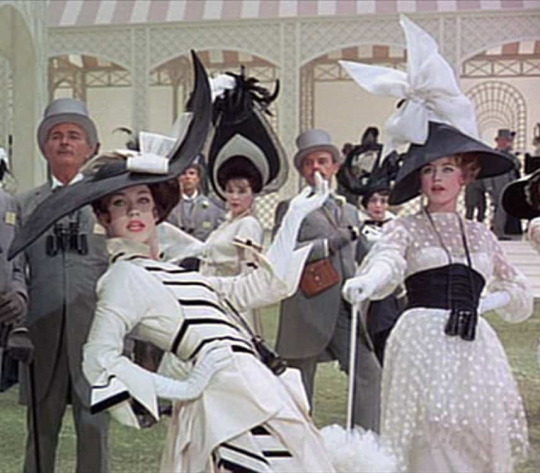




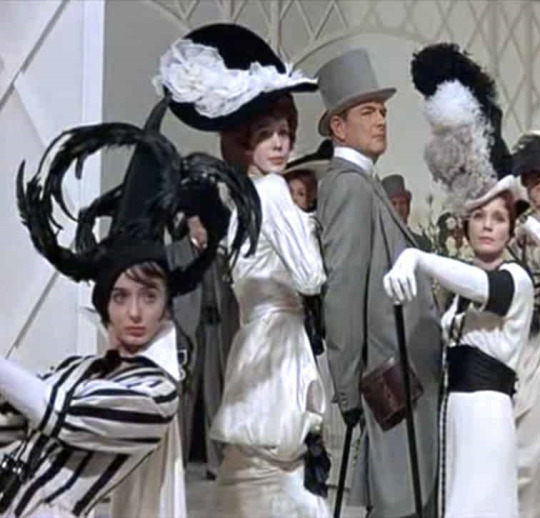


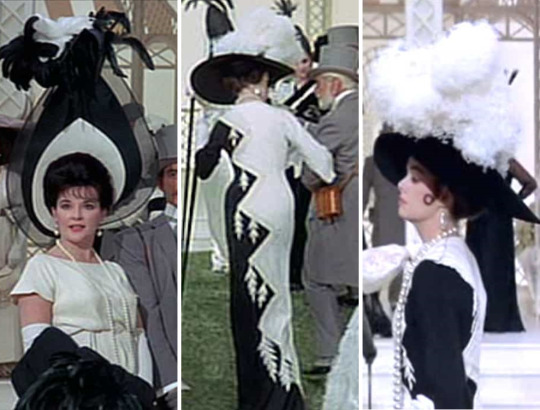

One Dress a Day Challenge
November: Oscar winners
My Fair Lady / "Ascot Gavotte" Ensemble
Year: 1964
Designer: Cecil Beaton
The costumes in this number are staggering. Not especially historically accurate in most cases, but bursting with slightly surreal creative style (there's something very "Dr. Seuss" about some of those hats). This may reflect the fact that Cecil Beaton first worked on the stage show, where exquisite detail is less important than making a bold impression on even the cheap seats.
Apparently, Beaton designed over 1,000 costumes for this movie, of which about 400 appear in this scene alone. See this article for even more photos.
#my fair lady#oscar winners#ascot gavotte#one dress a day challenge#one dress a week challenge#movie costumes#musical costumes#period film#1964 movies#1964 films#black and white october#black dresses#white dresses#academy award winner#cecil beaton#black and white dress
128 notes
·
View notes
Photo

#L’Amour à la mer#Love at Sea#Guy Gilles#French film#1964 films#Daniel Moosmann#Geneviève Thénier#Paris#French New Wave#Drama#Romance#French film director#French cinema#quaint#charming#bedroom#room#aesthetic#books#smoking man#decoration
109 notes
·
View notes
Text
Rookie-Critic's Halloween Horror-thon: Part 4 - #16-20


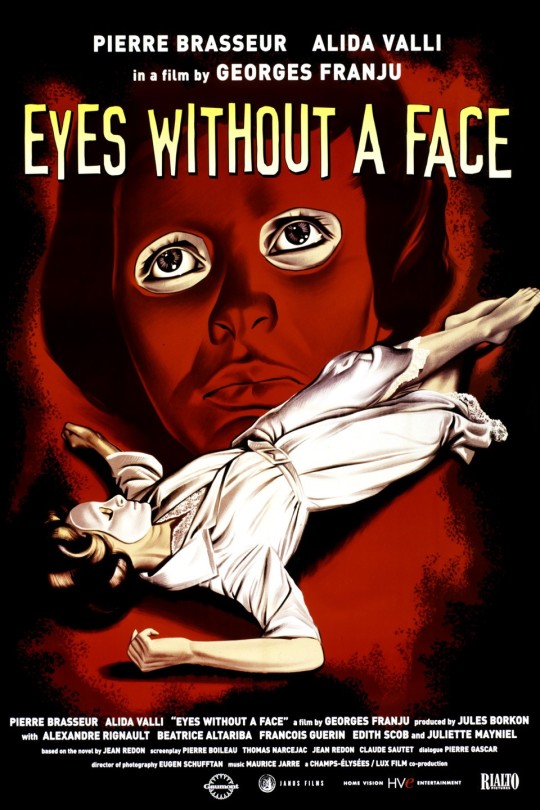


#16: Tetsuo: The Iron Man (1989, dir. Shinya Tsukamoto) [REWATCH]
A cult classic of Japanese cyberpunk horror and the debut film of one of my favorite Japanese directors, Shinya Tsukamoto (if you couldn't tell). The inspirational reach of this film is palpable if you know what to look for, having been cited by directors like Darren Aronofsky for his film Pi, Quentin Tarantino, David Fincher, and the Wachowskis for The Matrix. It's hard to argue with results like that. I personally love this movie, I have its scant 67-minute runtime nearly memorized and have seen it more times than I can remember. However, I can certainly acknowledge its shortcomings as something that's not accessible to most audiences. Plot is definitely more of a suggestion than a rule here, and a lot of the film is spent in a state of frantic bewilderment as you try to piece together what exactly is going on through the nearly incomprehensible madness onscreen, but ultimately the "why" of it isn't important. It's rare that I say this, but I almost prefer that the film doesn't really give the audience anything concrete to go off of. It gives enough, and for the purposes of its dissection (apropos word choice there, good job, Rookie) of the relationship between man and metal and the growing industrialization of the 80s, Tsukamoto does exactly what he needs to do, and doesn't overstay his welcome in the slightest. It's one of the bigger reasons why this film works better than either of its sequels/reimaginings, and why it's so well-regarded amongst international film buffs. A short, manic, bizarro-thrill ride, and I wouldn't have it any other way.
Score: 8/10
Currently streaming on AMC+/Shudder.
———————————————–
#17: Onibaba (1964, dir. Kaneto Shindo)
This, for a majority of its runtime, doesn't really feel like a horror movie. That being said, there are plenty of pieces of horror in it to where, by the end, I see why it's labeled as such. The suffocation of the grass field that surrounds our main setting from all sides aides the claustrophobic nature of the film, and casts an air of foreboding over every shot. It's an interesting watch that dives into the desperation we feel when we are starved of our base desires and how that can cloud our judgement, especially in times of great hardship (in this instance, war). It's a film that leaves itself wide-open for interpretation, and one I'm still pondering over days later.
Score: 7/10
Currently streaming on Max.
———————————————–
#18: Eyes Without a Face (1960, dir. Georges Franju)
This French horror from the early '60s is another that I've owned for quite some time, and just never taken the time to actually sit down and watch. It's a slow burn (much like a lot of these older, black-and-white films are), and there are moments that feel like they drag on for too long, but the parts of this film that do work, really work. What Franju and his team were able to accomplish with practical effects and makeup in this is exceptional by today's standards, let alone when the film was released in 1960. The acting from Édith Scob as Christiane is similarly excellent considering she acts through the entirety of her screen time with a mask on. To be able to convey emotion without the benefit of facial expressions and have it come through despite that handicap and the language barrier (the film is in French) rightfully earns this film the praise it has received over the decades.
Score: 7/10
Currently streaming on Max.
———————————————–
#19: Ginger Snaps (2000, dir. John Fawcett)
OK, so I've seen Jennifer's Body twice, right? Once back around the time it came out (I hated it then) and then once within the past 5 years because I heard it was underappreciated in its time and is worth re-evalutating (I still don't like it very much). So with the memory of Jennifer's Body still fairly fresh, I'm just gonna say this is so close to being the exact same movie (there's obviously some differences in their story: werewolf not succubus, sisters not best friends), to the point where I out loud in the group I was watching it with said "Jennifer's Body just straight ripped this off, right?" and got a fair amount of agreement. However, this, to me, is a much better film. It has a lot of the Diablo Cody-esque kitschy dialogue without tipping into hard cringe and the practical effects work, while B-movie-ish in nature (we're never, as a society, going to top the transformation sequence from An American Werewolf in London), is really well done. It strikes a good balance between camp and smartly written horror which Emily Perkins and Katharine Isabelle juggle competently. Isabelle especially steals the show here as the titular Ginger, and provides a good, if not slightly caricatured, depiction of female puberty. Narratively messy, but tonally sound, Ginger Snaps deserves its status as a cult classic.
Score: 7/10
Currently streaming on Peacock.
———————————————–
#20: Opera (1987, dir. Dario Argento)
Opera is largely considered director Dario Argento's last great film before the quality of his output started to drop, and I can see why. It has all of the things that make his movies so good: a compelling main character driven by an even more compelling lead performance, an engaging mystery that unravels itself naturally over the course of the film, and that impeccable giallo style that he is the king of. Cristina Marsillach gives an impassioned performance and easily garners the audience's sympathy. The biggest curiosity of the film is that the murder sequences, which are expertly shot and unique in that the killer always ties up our protagonist and tapes needles underneath her eyes so that she has to watch the horror that ensues, are always cut with this insane, Judas Priest-like heavy metal music playing over them. Let me tell you that the consistency with which that heavy metal music played throughout the film had me confused, and then put off, and then finally fully indoctrinated by the final time it happened at the film's end. So much so that when that final time was about to happen, I was quite literally on the edge of my seat with anticipation, because I could feel it coming, and then when it finally came on I jumped up and cheered. I'm not sure if the desired reaction was achieved, but man was it massively entertaining. It's a little goofy, but I feel like this was about as far as Argento's signature style can be pushed without being a parody of itself, and Opera still largely works in spite of that glaring oddity.
Score: 7/10
Currently streaming on AMC+/Shudder.
#Rookie-Critic's Halloween Horror-thon#Halloween Horror-thon#Halloween#Horror#Tetsuo: The Iron Man#Tetsuo#The Iron Man#Onibaba#Eyes Without a Face#Ginger Snaps#Opera#Shinya Tsukamoto#Kaneto Shindo#Georges Franju#John Fawcett#Dario Argento#1989 films#1964 films#1960 films#2000 films#1987 films#film review#movie review
1 note
·
View note
Text
The Last Man on Earth (1964)

Richard Matheson’s 1954 post-apocalyptic horror novel I Am Legend has received three big-screen adaptations, all of which have certain elements that work and their share of flaws too. This one may not be as slick as the later adaptations but it’s moody and exciting. The combination of Vincent Price as the world-weary hero and the ending cements this as the best version.
In 1965, a plague ravaged mankind. Most died, only to return to life as undead vampire-like creatures who crave blood, cannot stand sunlight, the sight of their own reflection or the smell of garlic. Three years later, the last man on earth is Dr. Robert Morgan (Vincent Price). He defends his home from the creatures at night and goes hunting for them during the day.
Although Vincent Price has no one to speak to for a large chunk of the film (some of it is set in flashback to explain how the world came to this sad state) he narrates his character's thoughts as he goes about his monotonous days checking the defences for weaknesses, addressing the dead bodies he finds around the city and hunting any vampires hiding from the sun so he can take their corpses to a pit and burn them. Price’s voice perfectly sets up the mood. He’s very matter-of-fact about everything, reminding us that he no longer has room in his life for luxuries such as anger. He’s become a shadow of himself; not even looking for a cure as much as a way to eliminate the creatures who have taken over the world that once belonged to his people. Even when signs of hope burst through the hardened soil, it’s not long before it gets stamped out. Maybe if he stumbles upon some kind of breakthrough, he'll suddenly find a greater purpose than daily extermination. More likely, he's going to make a mistake and get taken down by the vampires. The third possibility? He'll grow tired of it all and give up. It’s grim and unsettling.
The film captures the feel of the novel (I’d hope so, as it was written by Matheson under a pseudonym) with a couple of deviations here and there. The scenario is inherently interesting. You want to see where what’s coming next. Even with the mostly unnecessary flashback scenes, your intrigue is peaked. Will these hold the clue to a cure somehow?
The flashback scenes are unfortunately where the film is at its weakest for a few reasons. Firstly, it’s pretty obvious the film was shot in Italian and then dubbed into English. Not helping are the voice actors who recorded the dialogue. Most are pretty bad. Some are even worse.
There’s a strange moment towards the end where Morgan’s actions don’t quite match up with everything we’ve been told about him previously (I attribute it to a culmination of tragic events that come in quick succession) that might rub you the wrong way but it leads to a solid conclusion. The way you see it, the plot can go one of two ways and you just don’t know which we’ll get. It makes things tense up until the very last second. The picture’s final act is the reason you'll overlook the flaws and the low-budget (it looks fine overall but it’s shot in black-and-white, probably the first widescreen film in the public domain I’ve seen like this). I've witnessed so many movies chicken out at the eleventh hour. The Last Man on Earth commits all the way.
For Vincent Price alone, I’d say The Last Man on Earth is worth seeing. This is by no means the definitive adaptation of the novel but so far, it’s the best version we’ve gotten. (On DVD, March 23, 2020)

#The Last Man on Earth#I am legend#movies#films#movie reviews#film reviews#Sidney Salkow#Ubaldo B. Ragona#Richard Matheson#Vincent Price#Franca Bettoia#Emma Danieli#Giacomo Rossi Stuart#1964 movies#1964 films
2 notes
·
View notes
Text

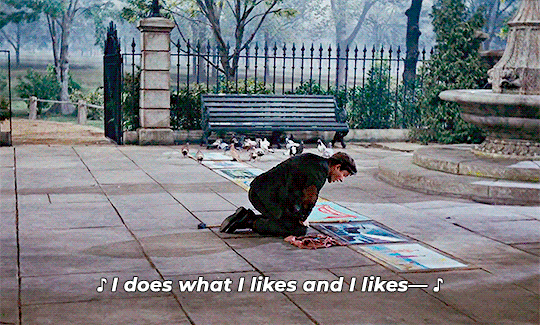
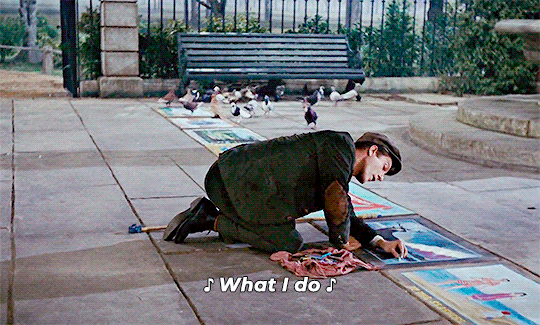

Dick Van Dyke in Mary Poppins (1964) dir. Robert Stevenson
#dick van dyke#mary poppins#robert stevenson#1960s#1964#disneyedit#disney#filmedit#filmgifs#moviegifs#cinema#my gifs#my edits#Disneygifs#1k#film#old hollywood
3K notes
·
View notes
Text
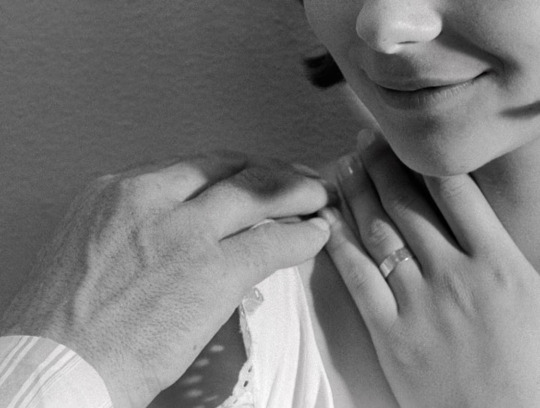



Une femme mariée (Jean-Luc Godard, 1964)
#Une femme mariée#Une femme mariee#Godard#Jean-Luc Godard#Jean Luc Godard#A married woman#nouvelle vague#Une femme mariée: Suite de fragments d'un film tourné en 1964#black and white#Macha Méril#Macha Meril#1964#hands#kiss#Bernard Noël#Bernard Noel#love
3K notes
·
View notes
Text
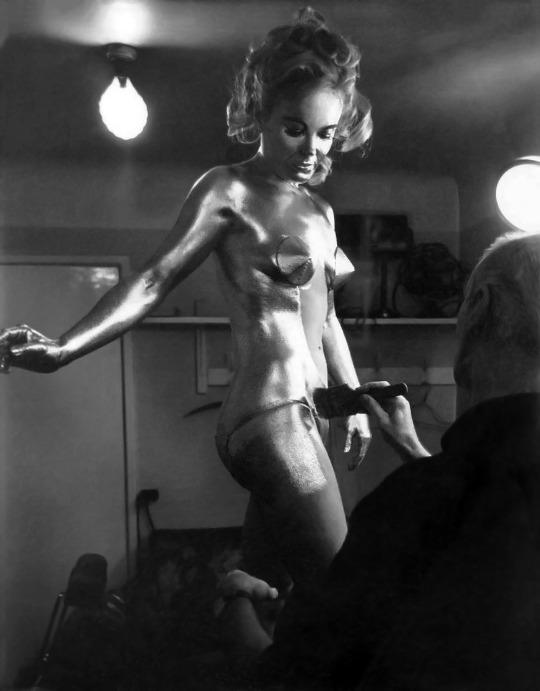
Shirley Eaton / being painted gold during production of Guy Hamilton’s Goldfinger (1964)
585 notes
·
View notes
Text

Clint Eastwood in A Fistful of Dollars (1964)
373 notes
·
View notes
Text

Voyage to the End of the Universe (1964)
165 notes
·
View notes
Photo
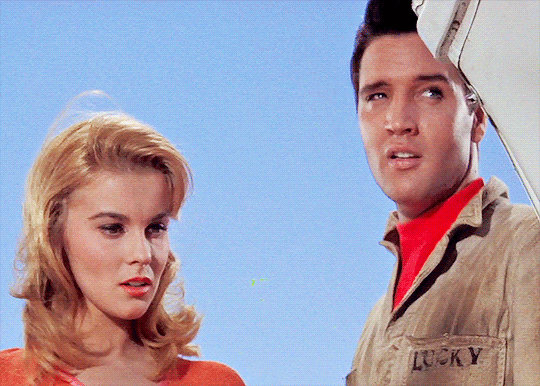
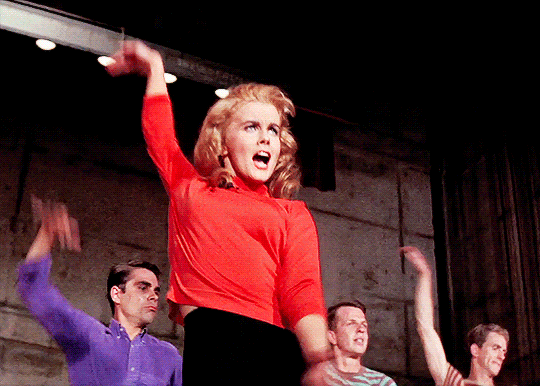


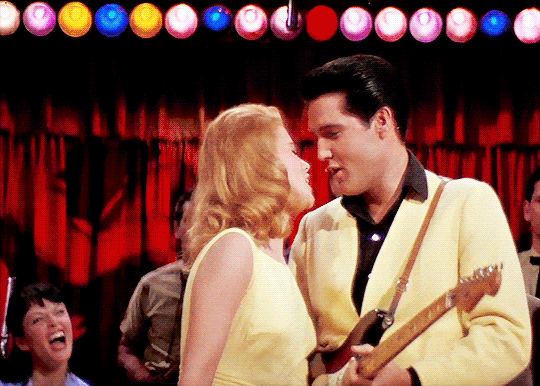
my rival is a baby blue racing car.
viva las vegas (1964) // dir. george sidney
#filmedit#classicfilmedit#musicaledit#elvis presley#classicfilmsource#fyeahmovies#filmgifs#moviegifs#uservintage#cinemaspast#viva las vegas#1960s#1964#ann-margret#george sidney#endless list of musical films#m: viva las vegas (1964)#*#*gifs#*request#c
928 notes
·
View notes
Text

Shirley Eaton being painted gold for the demise of her character, Jill Masterton, in Goldfinger (1964)
194 notes
·
View notes
Text
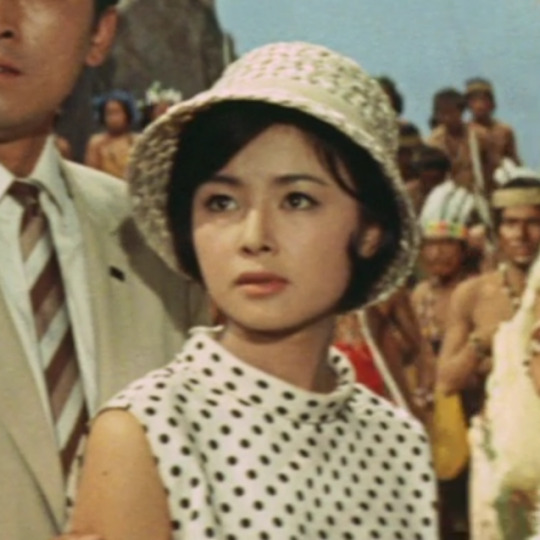

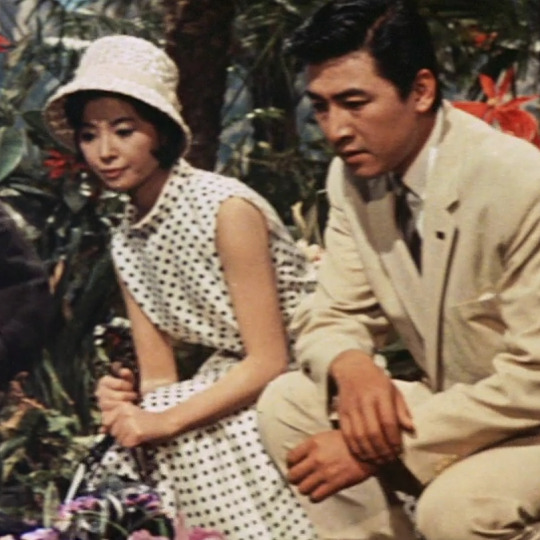

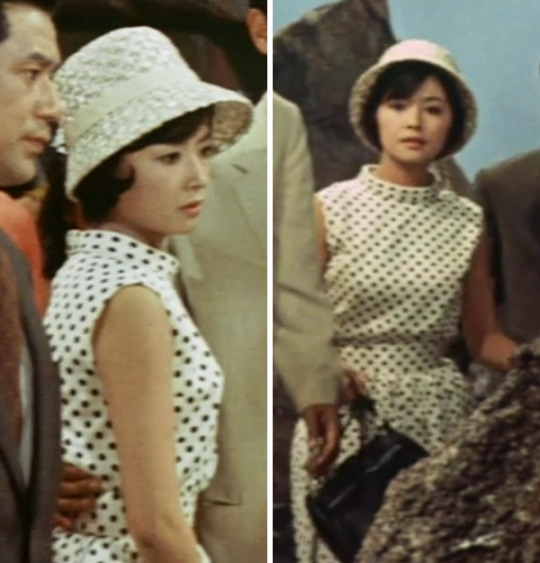


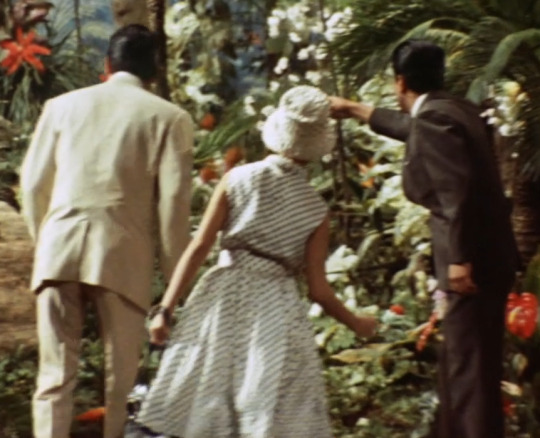
One Dress a Day Challenge
Black and White October
Mothra vs. Godzilla (Mosura tai Gojira) / Yuriko Hoshi as Junko Nakanishi
This classic polka-dotted sleeveless dress is appropriate for virtually any occasion, from meetings with the chief of an isolated tribe to negotiating with diminutive fairies. With its standing collar, A-line skirt, and belt of the same material, it wouldn't look out of place in any decade from the 1950s forward.
What's particularly impressive is that Junko somehow manages to wear it under a suit of oilskins including pants (see below) without getting it impossibly wrinkled! (Either that, or she folded it up very small and carried it in her purse.)
Junko accessorizes with a white, bucket-shaped straw hat, black shoes, and a black purse.
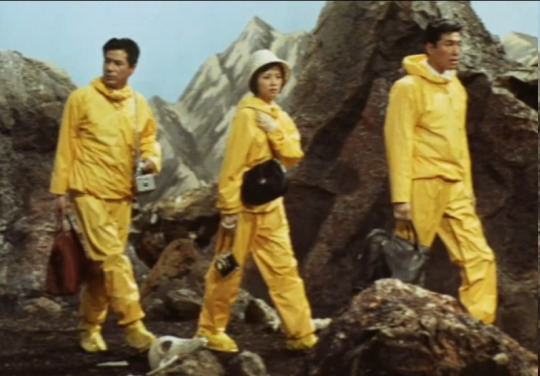
#mothra vs. godzilla#black and white october#yuriko hoshi#one dress a day challenge#one dress a week challenge#movie costumes#1964 movies#1964 films#1960s fashion#1960s style#japanese movies#japanese films#japanese cinema#mothra x godzilla#mosura#60s style#60s fashion#hoshi yuriko#mosura tai gojira#mothra versus godzilla#junko nakanishi#black and white redux
45 notes
·
View notes
Photo

#L’Amour à la mer#Love at Sea#Guy Gilles#French film#1964 films#Daniel Moosmann#Geneviève Thénier#Paris#French New Wave#Drama#Romance#French film director#French cinema#quaint#charming#window#plants#flowers#decoration#aesthetic
92 notes
·
View notes
Text
Dr. Strangelove or: How I Learned to Stop Worrying and Love the Bomb (1964)

Dr. Strangelove or: How I Learned to Stop Worrying and Love the Bomb, is a film so permanent you don’t even know how much influence it's had until you've seen it. This satirical take on the Cold War is both hilarious and terrifying thanks to an impeccable attention to detail, terrific performances, and more than one scene that will stick with you forever.
United States Air Force Brigadier General Jack D. Ripper (Sterling Hayden) has done the unthinkable and single-handedly declared nuclear war against the USSR. With foolproof safety precautions preventing further orders from reaching the planes approaching enemy territory, his executive officer Group Captain Lionel Mandrake (Peter Sellers) desperately searches for a way to recall the attack. Meanwhile, the President of the United States (played by Sellers again) attempts to prevent the incoming catastrophe with the help of his advisors and the mysterious Dr. Strangelove (Sellers one more time).
The film begins with an assurance that what takes place here could never happen in real life. This statement is about as convincing and reassuring as a friendly dinner invitation from Hannibal Lecter. No detail is spared when showing us the codes, secret envelopes, radio signals, and equipment that form this air-tight mechanism designed to prevent wrong orders from reaching the planes. These planes - always in the air and always ready to strike - ensure that if the Soviet Union decides to strike "the free world" retaliation will be swift. But what happens when a jingoistic lunatic decides that counterattacking isn’t good enough? It could mean a long-lasting nuclear winter that’ll wipe out all humanity. If not, it could be the much-needed catalyst to usher us into an era of global peace. That’s, of course, if General Ripper can be prevented from damning us all.
So thorough is this exploration of mutually-assured nuclear destruction that only repeat viewings will allow you to appreciate the humorous side of this scenario. Like so many boneheaded attempts by the Soviet Union and the U.S.A. to one-up each other during the Cold War, Dr. Strangelove is funny in hindsight but in the moment it makes you sweat buckets. The suspense is intensified by how many people fail to realize how close they are to complete annihilation. That, in turn, is what makes it so funny. Seeing Captain Mandrake sit back and try to remain calm while he’s listening to General Ripper’s rambling logic, General Buck Turgidson (George C. Scott) trying and spin the scenario into something positive for the President, witnessing the clearly insane Dr. Strangelove (who isn’t actually in the film all that much) propose a solution in case war does break out makes you want to jump into a straightjacket… until you realize your side of the screen is perfectly safe.
There are so many memorable elements in this film. Dr. Strangelove and his Alien Hand Syndrome (a syndrome often called Dr. Strangelove Syndrome), Ripper yammering about “precious bodily fluids” or the U.S. President’s interactions with the Russian President, the introduction credits, the music, the design of the Pentagon’s War Room, the screenplay, the cinematography (gorgeous and chilling black-and-white) and the performances. Every aspect of filmmaking is firing on all cylinders. It’s a movie you want to come back to again and again to catch all of the little details. There’s no way you can get everything Dr. Strangelove has to offer on a single viewing because unless you know ahead of time, there’s no way you’d recognize Sellers in his three roles. And that ending! This is a must-see. (On Blu-ray, October 20, 2017)

#Dr. Strangelove#movies#films#movie reviews#film reviews#Stanley Kubrick#Terry Southern#Peter George#Peter Sellers#George C. Scott#Sterling Hayden#Keenan Wynn#Slim Pickens#Tracy Reed#1964 movies#1964 films
9 notes
·
View notes
Text

Prudence Hyman in The Gorgon (1964)
98 notes
·
View notes
Text

Une femme mariée (Jean-Luc Godard, 1964)
#Une femme mariée#Une femme mariee#Godard#Jean-Luc Godard#Jean Luc Godard#A married woman#nouvelle vague#Une femme mariée: Suite de fragments d'un film tourné en 1964#black and white#quote#Macha Méril#Macha Meril#hands#back#interest#1964
954 notes
·
View notes